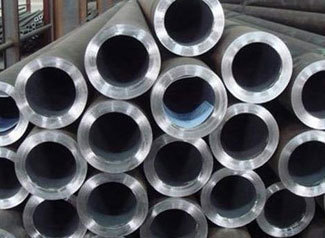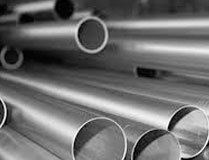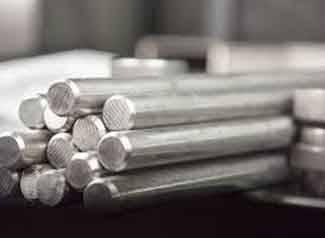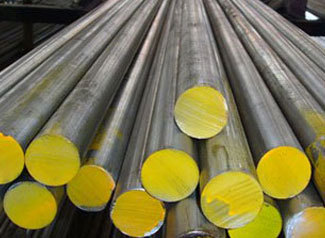Don't wanna be here? Send us removal request.
Text
All You Need To Know About Uses Of Stainless Steel Angles
Stainless Steel Angles applications Stainless steel angles and channels are used for a number of purposes. For example, they 're used in building homes and other structures in the construction industry. These canals and angles are used as structure support. Since they are made of stainless steel, they are likely to last longer, and will not get rusted even after years of use. Although it will cause rust overtime, it certainly won't impact the overall capacity of the channels and angles to provide the requisite support. It is also better than wood. Inoxidable steel angles would not need constant replacement even after they have been mounted for years unlike wood with short lifespan.

Edged Stainless Steel Circle for different structural applications
• Stainless Steel Angle Bars are available in the form of hot rolled angles with either equal or unequal leg length.
These Stainless Steel Round Bar are well suited for structural applications – particularly for those needing strength and excellent resistance to corrosion.
You can choose them in a variety of designs, sizes , shapes and types according to your industrial needs, and place your order accordingly, depending on your choice and requirement.
These bars have a range of features added with ASTM A105 Flange, and they come with a user guide for different applications. Depending on your preference you need to select the right sort of angle bar.
There are a number of renowned manufacturing firms in China where high-quality production and advanced API 5L Grade B Pipe and angle bars are done in large quantities. They have a team of multilingual professionals who help you to settle the deal successfully and ensure that products are delivered to your address on time.
Among some of the top companies that bring the stainless steel angle bar to high quality, you'll find Jiangsu Steel 's name coming up on top with Grade 10.9 Bolt.
Nowadays stainless steel angles Grade 12.9 Bolt and channels are more suitable, since most of today's buildings are made of concrete, and wood may not be able to provide adequate support for the structure. You have to make use of stainless steel angles and channels whether you are a building company or merely a homeowner who needs to ensure that his property is well-constructed and protected. Their shapes are distinct, making it more suitable or suitable for today's people's need to obtain a structure that needs sufficient support that other materials, such as wood or lumber, might not provide.
A steel angle is any kind of product from the steel bar that is extruded to form an angle, most commonly a 90 ° angle. Depending on the design needs the steel angle edges can be left sharp or rounded off. Hot rolled stainless angle products are suitable for applications requiring greater strength and greater corrosion resistance. Stainless angle has a long lasting rusty, grainy mill finish that is commonly used by all production ventures that are exposed to the elements.
0 notes
Text
Everything You Need To Know About Steel Bars
Stainless steel bars are traditional construction and finishing materials. They are commonly used in a wide variety of structural across industries and applications. Stainless steel is a powerful material that gives a long life to your construction. If you are looking for products that can offer a strong and long life to your building then you must use stainless steel.
What Is Steel?
Steel is indispensable in every country's infrastructure building and overall economic growth and is widely used in manufacturing, construction, petrochemical engineering, etc. Statistical data indicate that the eight industries with the largest proportion of steel consumption are construction, machinery, vehicles, shipbuilding, railways, gasoline, household electrical appliances, containers, etc.
Their use of steel is above 80%. And construction is the leading segment of steel consumption, led by machinery. The annual use of steel in these two industries is about 70%.
The overwhelming popularity of steel bars is because it is possible to manufacture the same technical specifications in various styles, forms, sizes and bar grades. Steel bars are commonly shaped like rectangular, oval, hexagonal, square and channel. On most occasions, it is the bar shape that determines its field of application.
Stainless Steel Round Bars
Carbon Steel Round Bar is one of the most influential players in the machining market. With the beautiful property of corrosion resistance, SS round bars are used in manufacturing industries which are indulged in fasteners and machinery development. Still, our highly advanced Fitmach bars find their application in the machining industries. These calcium-treated bars are of free-machining grades, resulting in improved cutting speed and longer life of the arms. These specialised SS 304 Sheet are commonly employed in the manufacture of various machine parts with precision straightened and mirror finish surfaces.
Having discussed the Stainless Steel Square Bar based on the shapes, listing the applications based on functional requirements would certainly be worthwhile. For example, solenoid bars made from ferritic stainless steels, the backbone of the electromagnetic tool industry, have strong wear resistance, superior resistivity and higher hardness. A word of gratitude for the role played by these bars as plungers in control valves and electronic fuel injectors, electrical and electromagnetic machines, relays, printers, solenoid valves.

What Are The Uses Of SS CheckeredPlates
SS Chequered Plate of metal are used in many areas. The most famous Stainless Steel ERW Pipe is used as a plate for treading. The new and current use is as metal architectural materials used in the cladding of walls and ceilings. It is also used in some door designs, benches, furniture, and industrial uses as decoration and protective sheets.
SS 304 Pipe are metal plates with regular and even projection pattern on either side displaying various types of shapes while the reverse side remains smooth. It comes in different ways, including ruby, tears drop or embossed. Usually, these SS 316 Flanges consist of metals such as stainless steel, mild steel and aluminium. Such plates have a high aesthetic value whilst the projections provide extensive skid-proof quality. They also enjoy slip resistance, ability to wear and function of self-drain.
0 notes
Text
All about steel and machines suitable for stainless steel
There are some categories of steels:
General-purpose non-alloy steels (construction);
Special non-alloy steels, for heat treatment, malleable, weldable, forgeable…;
Highly alloyed steels:
Stainless steels, high-speed steels, for tools with a high cutting speed such as drills.
We will differentiate between standard steels (non-alloy or low-alloy steels) from stainless steels.
Standard Stainless Steel Circle is cheaper than stainless steel. However, it is not resistant to corrosion, which therefore influences the liquid it conveys: food, drinks, drugs, or even pure gas.
Stainless steel has become indispensable.
Stainless steel has become essential in many areas: kitchen utensils, everyday objects. It is also used in medicine, surgery, construction and public works, shipbuilding, automotive, aeronautics, tools, mechanical industries, food, chemicals, transport, etc. These markets are subject to a large number of standards and cannot afford to choose a standard Stainless Steel Round Bar. It risks being damaged and contaminating sensitive fluids.
The service life of the installations is also better when using stainless steel. Due to their composition, they are not, or little, subject to corrosion and oxidation. They are therefore much more resistant than standard steels.
These standards ASTM A105 Flange are mainly used in all construction and building companies. They are suitable for outdoor uses, which are not afraid of corrosion and oxidation.

What is stainless steel and in which industries is it found?
Stainless steel, short for Grade 12.9 Bolt, is made of a steel alloy (with at least 1.2% carbon) and more than 10.5% chromium. This alloy has the property of being insensitive to corrosion and of not degrading to rust.
The fact that there is more than 10.5% chromium in the alloy causes the formation of a protective layer of chromium oxide which makes the steel stainless.
Main families of stainless steels:
Ferritic: iron-chromium, carbon <0.1%, ferromagnetic (magnetic). Chromium and molybdenum increase corrosion resistance. Titanium and niobium improve weldability;
Martensitic: iron-chromium, carbon> 0.1%, ferromagnetic ("magnetic"), Suitable for hardening, for example in the case of the manufacture of hammers which must be harder than nails.
Austenitic: iron-chromium-nickel, carbon <0.1%, it is more than 65% of the use of stainless steel;
Duplex: iron-chromium-nickel, mixed austenitic-ferritic structure, magnetic: these steels have better corrosion resistance than most common austenitic and ferritic grades.
Which category of the tube for which type of industry?
In principle, API 5L Grade B Pipe, thanks to their alloy, is designed to resist corrosion, oxidation and creep (deformation).
Their differentiation into four categories seen above will allow them to be applied to the right industries. There is no exact science since the end use of the tube will determine the choice of it, but we can still define the main lines:
Ferritic steels:
Used as a corrosion resistance barrier, it is found for example to equip the walls of Grade 10.9 Bolt steel pressure equipment used in the petrochemical and chemical industries. They are also suitable for agro-food industries.
Austenitic steels:
They are the most numerous, due to their very high chemical resistance, their flexibility comparable to that of copper, and their high mechanical characteristics. These Inconel 625 Bolts sheets of steel also have a range of use at low temperatures for the production of equipment intended for cryogenics. They are also suitable for the marine environment.
0 notes
Text
How to remove and prevent rust on stainless steel
We can then say to ourselves: it's not that complicated, you just have to add as much chrome as possible! But it is not that simple. High chromium Grade 8.8 Bolts content decreases the hardness of the steel and therefore its ability to retain the edge. It is to remedy this that it is necessary to use other alloys—vanadium, for example.
The SS 304 Flanges pushes the boundaries of what is possible. It is an extremely popular type of steel for its retention of sharpness and resistance to corrosion. With 1.9% carbon, this steel has high carbon content. But it also contains 20% chromium. It is therefore impossible for this steel to have good retention of the cutting edge. But this is easily remedied by adding 1% molybdenum, 0.6 tungsten and 4% vanadium. These are the elements that make it possible to have an extremely hard edge.

So the SS 316 Flanges has no flaws? This is certainly not a disadvantage, but it is worth mentioning. This steel is too hard to be strong. It will not break. It is, therefore, suitable for large knives. The steel can also be difficult to sharpen without good sharpening equipment. The alloys added to the steel only complicate the task.
How to prevent the appearance of rust on stainless steel?
Just clean and use oil for SS 316 Round Bar. Why make it more complicated? The main thing is to make sure, if possible, to always dry the knife as soon as possible after cleaning. Then apply a few drops of oil from time to time. Ballistol maintenance oil is perfect for this use, but if there is nothing better, sunflower oil will do.
How to remove rust?
A slight rust spot can be removed in several ways from SS 304 Round Bar. Depending on the type of rust and its depth in the steel, the first step is to clean the knife with hot water. Use of a sponge may be necessary but be careful not to scratch the blade with the abrasive side.

Is it not sufficient? Then try the Flitz tube. It is a polishing paste. Polishing cloth and a touch of Flitz paste can remove some rust stains. Be careful to run the cloth in the right direction on Stainless Steel Angle. When you notice lines, scratches and the like on the knife blade, it is important to pass the dough in the direction of these lines and not perpendicularly.
It should be noted that the use of such products can cause a reaction on the finish of the blade. A satin blade of High Tensile Fasteners, for example, may tarnish where the dough passes. It is, therefore, better, as usual, to be safe than sorry.
There are a large number of factors explaining the phenomenon of rusting on stainless steel. From sea air to salt naturally present in food. Situations that cause corrosion to appear faster than others on Aluminium Sheet. It is, therefore, necessary to take care of the maintenance of any sharp object. Prevention is the best way to avoid rust. Is it already too late? Don't panic a blow of polish or a sharpening session on time can be the solution.
0 notes
Photo

SS 304 Flanges Purchase Stainless Steel 304 Flanges from the manufacturer, View A182 F304 SORF Flange Dimension, Check Price of SS 304 Flanges, DIN 1.4301 WNRF Flange Ready Stock of SA182 UNS S30400 Blind Flanges.
0 notes
Text
How cutlery is steel made?
The Stainless Steel Flanges is a collection of different elements that make up a thin and sharp knife blade. These elements ensure the strength of the steel but are not entirely stainless. The finer the knife, the more sensitive it will be to corrosion. It is, therefore, a question of making a decision and knowing how to put water in your wine. Well-maintained stainless steel should not be affected by corrosion, but sea air, saltwater and acids can be very tough. Regardless of the type of Alloy Steel Round Bar. Whatever the price of the knife. You must, therefore, be careful when using a knife in a marine environment or the kitchen. The most important thing is to always make sure to clean and dry the knife after each use—simple sharpening session.
How cutlery is steel made?
Before understanding what the differences are between the different types of steels, it is important to know how they are created. Indeed, Stainless Steel Seamless Pipe is not only made up of iron. It is a major element in the constitution of steel may, for a knife blade, it is not sufficient. Each type of steel is therefore made up of iron as well as other components. The Stainless Steel Fittings also contains carbon, chromium, nickel, molybdenum, silicon, tungsten, cobalt, manganese and many more. It is by playing with the percentages aof these components that steelmakers create different SS 316 Pipe alloys. One alloy will be very strong. Another will be very hard, etc. Some alloys can rust visibly while others can spend their lives on the ocean floor without ever being weathered.

It's all in carbon
Cutlery steels all contain Carbon Steel Round Bar. Without it, the blade of a knife could not be sharpened so finely or retain its sharpness. This explains why cutlers often speak of high carbon steel. For many, this is a real guarantee of quality. Some lower quality alloys have a low carbon content which results in steel that cannot be sharpened finely enough.
A large amount of carbon in one type of Stainless Steel ERW Pipe is therefore often a good sign. Unfortunately, carbon has another property: it causes corrosion of steel. A high carbon content promotes strength and sharpness but increases sensitivity to corrosion.
Typically, blade SS Chequered Plate contains between 0.5 and 1.5% carbon. There are some steels with 3% carbon but also types of steel with only 0.15%. But these are very special types of steels.
Addition of alloys and the importance of chromium
Steelmakers, therefore, have to play with alloys. Chromium has a relatively important role in cutlery steel. It is by mixing a large quantity of carbon with a high quality of chromium that SS 304 Pipe is obtained. In practice, the limit is set at a chromium content of 13%. More than 13% of chromium allows the designation SS 304 Sheet, less than 13% and it is always carbon steel. There is another category: tool steel. As the chromium content of this type of steel is around 13%, it is difficult to place it in either category.
1 note
·
View note